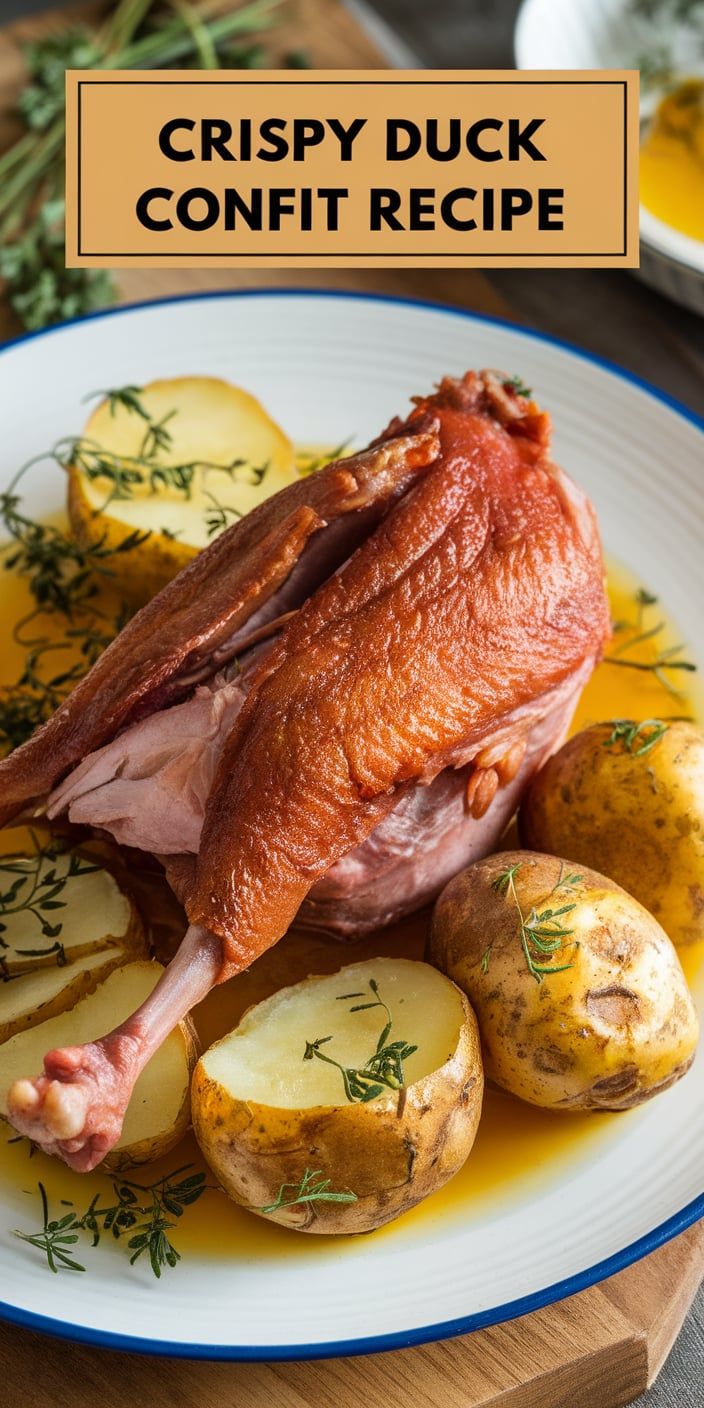Unlock the secrets of French cuisine with this incredible homemade duck confit recipe that transforms an ordinary dinner into an extraordinary culinary experience. Crispy duck confit represents a classic technique that elevates simple ingredients into a gourmet masterpiece right in your kitchen.
Originating from traditional French cooking methods, this dish promises tender meat encased in an irresistibly crispy skin that will impress even the most discerning food enthusiasts. With our detailed guide, you’ll learn how to create restaurant-quality crispy duck confit that will transport your taste buds straight to the French countryside.
Key Takeaways
- Master an authentic French cuisine technique
- Create restaurant-quality homemade duck confit
- Learn professional cooking methods
- Enjoy a crispy exterior with succulent meat
- Impress dinner guests with classic French recipe

Understanding Duck Confit’s Rich History and Tradition
Duck confit represents a remarkable culinary journey through traditional French cooking that spans centuries. This iconic dish emerged from the rural kitchens of southwestern France as a brilliant preservation technique long before modern refrigeration existed.
The duck confit history is deeply rooted in agricultural survival strategies. Farmers discovered an ingenious method to preserve duck meat by slowly cooking it in its own fat, creating a delectable and long-lasting protein source.
Origins of Traditional French Cooking
In the Gascony region of France, duck confit began as a practical solution for food preservation. Peasant families would:
- Salt duck meat thoroughly
- Slowly cook it in rendered duck fat
- Store the preserved meat in ceramic containers
Culinary Evolution and Popularity
What started as a survival technique transformed into a gourmet delicacy. Chefs began appreciating the rich, tender meat and the potential for creating incredibly crispy duck skin.
The Science of Crispy Duck Skin
Achieving the perfect crispy duck skin requires precise temperature control and technique. The slow cooking process allows fat to render gradually, creating a golden, crunchy exterior that food enthusiasts crave.
“Duck confit represents the pinnacle of French culinary innovation – transforming necessity into an art form.” – French Culinary Institute
Essential Ingredients and Equipment for Crispy Duck Confit Recipe
Creating an exceptional duck confit requires carefully selected duck confit ingredients and specialized cooking equipment. The magic of this classic French dish lies in its precise preparation and high-quality components.
Key Ingredients for Perfect Duck Confit
- Duck Legs: Preferably fresh, skin-on Moulard or Pekin duck legs
- Kosher salt for curing
- Fresh herbs: thyme, rosemary, bay leaves
- Black pepper
- Garlic cloves
- Duck fat for slow cooking
Essential Cooking Equipment for Duck Confit
| Equipment | Purpose |
|---|---|
| Heavy Dutch oven | Slow, even heat distribution |
| Digital meat thermometer | Precise temperature monitoring |
| Large glass or ceramic dish | Curing and salt application |
| Sharp kitchen knife | Trimming and preparation |
Professional chefs recommend investing in quality duck confit ingredients and proper cooking equipment to achieve restaurant-quality results. The right tools transform a good recipe into an extraordinary culinary experience.
Selecting premium duck legs and maintaining precise cooking temperatures are crucial for creating a mouthwatering duck confit that will impress even the most discerning food enthusiasts.
Step-by-Step Cooking Method and Techniques
Mastering the duck confit recipe requires precision and patience. These cooking techniques will transform an ordinary duck leg into a culinary masterpiece with perfectly crispy duck skin that will impress even the most discerning food enthusiasts.
Preparing and Seasoning the Duck
Start your duck confit journey by selecting high-quality duck legs. Carefully trim excess fat, leaving a thin layer for flavor. Create a seasoning blend with:
- Kosher salt
- Fresh ground black pepper
- Dried thyme
- Minced garlic
Generously rub the seasoning mixture into the duck legs, ensuring complete coverage. Pro tip: Allow the seasoned duck to rest uncovered in the refrigerator for 24-48 hours to develop deeper flavors.
Curing and Cooking Process
The traditional duck confit recipe demands slow, low-temperature cooking. Place the duck legs in a heavy-bottomed pot, completely submerged in duck fat. Cook at 225°F for approximately 2-3 hours until the meat becomes incredibly tender and begins to pull away from the bone.
Achieving the Perfect Crispy Finish
To create irresistibly crispy duck skin, remove the legs from the fat and place them skin-side down in a hot cast-iron skillet. Sear for 3-4 minutes until the skin turns golden brown and crackles with a satisfying crunch. The result? A duck confit that combines melt-in-your-mouth meat with an incredible crispy exterior.
Conclusion
Making homemade duck confit is more than a recipe—it’s a gateway to authentic French cooking at home. This classic technique transforms an ordinary duck leg into a crispy, tender delicacy that will impress even the most discerning food enthusiasts. With practice and patience, anyone can recreate this traditional French dish in their own kitchen.
The beauty of duck confit lies in its simplicity. By understanding the core techniques—salt curing, slow cooking, and achieving that perfect crispy skin—home chefs can elevate their cooking skills. Each attempt brings new insights and refinement to your culinary craft, making the learning process as delightful as the final dish.
Don’t be intimidated by the process. French cooking at home can seem challenging, but duck confit is surprisingly approachable. Start with quality ingredients, follow the steps carefully, and trust your culinary instincts. Experiment with different herbs, adjust seasoning, and make the recipe your own.
Your journey into homemade duck confit represents more than just preparing a meal—it’s about connecting with a rich culinary tradition. Share your creations with friends and family, and enjoy the satisfaction of mastering a classic technique that has delighted food lovers for generations.
